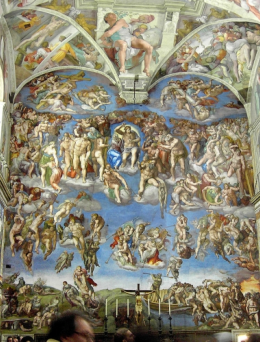
Originally published in Christianity Today
The Sistine Chapel is more dazzling, and its artwork better preserved, due to recently completed lighting and ventilation system upgrades.
The three million euro (R40m) renovation included the installation of 7 000 specially-designed LED lamps, and a state-of-the-art ventilation system, according to Yahoo News.
The project was funded through European Union funds and Vatican donations.
Fabertechnica founder Marco Frascarolo discussed the innovativeness of the chapel’s new lighting system.
“The LEDs have a color spectrum specifically designed with the pigmentation of the frescoes in mind to ensure the light faithfully reflects the original colours, as the artists intended,” he explained. Fabertechnica was one of the companies that designed the new system.
“As each LED can be tuned to a different color, we spent long nights in the chapel with the Vatican Museum curators, trying out different mixes of red, blues, whites… trying to get it just right.”
Eight color samples are usually selected to create an LED system. For the Sistine Chapel project, 276 samples were analysed.
The chapel ceiling and “The Last Judgment,” both created by Renaissance artist Michelangelo, are two of the most famous paintings in the world. The lighting system installed in the 1980s cast shadows over some of the chapel’s artworks, but the LEDs illuminate the stunning frescoes.
About 20,000 people visit the Sistine Chapel each day, and the space can accommodate a maximum of 2 000 at a time. The high traffic means high levels of carbon dioxide, sweat, and other chemicals that can affect the painted masterpieces.
“The previous system was only capable of regulating the air for up to 700 people,” Carrier Corp. AdvanTE3C Solutions Center Director Michael Grabon said. “With this system the room can hold a maximum of 2 000 people without damaging the artworks.”
The newly-installed Carrier ventilation system will protect the art for future generations.
“We know the amount of CO2 and humidity released by each visitor and can make adjustments accordingly, lowering the temperature or raising it if necessary to compensate for cold spells,” Grabon explained. Three cameras monitor the number of people in the chapel, and Grabon can regulate the air from his home computer or cell phone.
The renovation project is expected to cut ventilation output by 60 per cent, and wattage by 90 percent.







